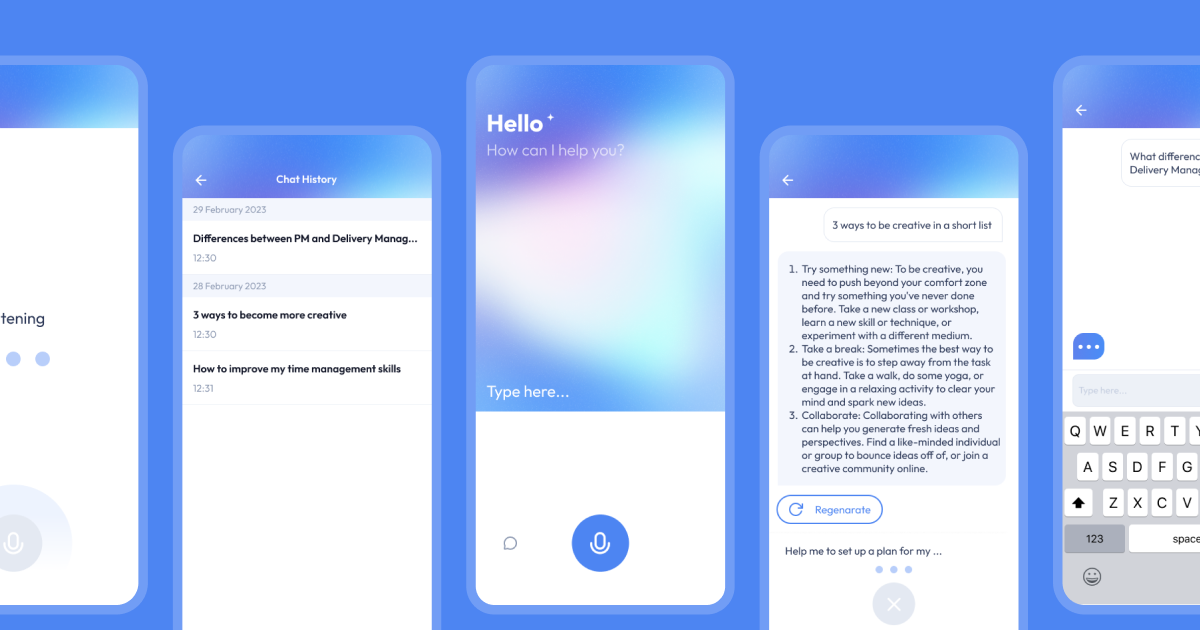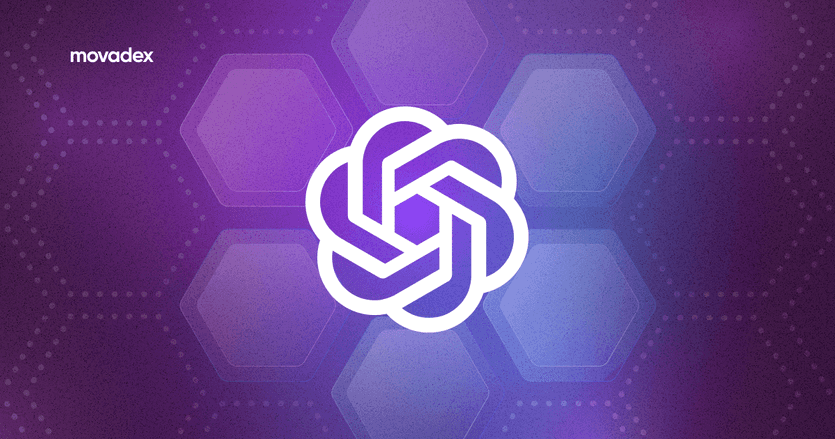ChatGPT, an innovative tool, emerged from the research efforts of OpenAI, a leading artificial intelligence company. Introduced in November 2022, this creation is a testament to the collaborative work of a team of entrepreneurs and researchers, counting notable figures like Elon Musk and Sam Altman among its founders. Established in 2015, OpenAI enjoys support from various investors, with Microsoft standing out as a prominent contributor to its success.
Has chat made a significant impact on the world? Absolutely, and the business landscape, in particular, has experienced a profound transformation thanks to the streamlined processes it offers. That's exactly what I'll delve into today: exploring how to integrate chat into your product for enhanced functionality seamlessly.
Understanding the GPT-3 API
The GPT-3 API (Application Programming Interface) works as a tool that allows developers to interact with and utilize the capabilities of OpenAI's GPT-3 model. Of course, developers need to authenticate their requests by obtaining an API key from OpenAI. This key is crucial for accessing the GPT-3 API and making requests securely.
It's important to note that the GPT-3 API operates in a stateless manner, meaning it does not retain memory of past requests. Each interaction with the API is independent, and developers need to manage the context and continuity of conversations if needed.
How GPT-3 Integration Сan Be Utilized?
GPT-3 chat integration isn't limited to chatbots—it brings a whole array of benefits to different products and industries. Take Edtech, for instance. When GPT-3 becomes part of educational platforms, it becomes your virtual tutor, answering your questions, and even tailoring content to match your unique learning style and preferences. It's like having a personal guide in your educational journey.
In what other situations can GPT-3 chat assist you?
Natural Language Understanding (NLU)
GPT-3 can enhance the natural language understanding capabilities of products, making them more adept at interpreting and responding to user queries and commands. For example, an e-commerce platform uses GPT-3 to enhance its chat support.
Content Generation
This presents a versatile opportunity for any business. For instance, integrating GPT-3 into processes like crafting social media content and developing product descriptions allows for both time savings and the maintenance of consistently high-quality output.
Chatbots and Virtual Assistants
An obvious way to use it. Do you have customer support? This is beneficial for customer support, information retrieval, and task automation. For example, if the same questions are constantly being asked, why not automate the process? This will significantly reduce support time and free up hours for more important tasks.
Code Generation
While this integration may seem exclusive to developers, it plays a crucial role in expediting the development process. GPT-3 aids developers by generating code snippets based on natural language descriptions.
Language Translation
Engaged in managing content across multiple languages? Tasked with translating an app into 30+ languages? This is a task that can be automated, though it may still benefit from a final human check for vocabulary and grammar accuracy.
EdTech
GPT-3 can be integrated into educational platforms to provide personalized tutoring, answer student queries, and generate educational content. For example, an automated SWOT analysis of the student, thanks to which you will know why exactly it is necessary to contribute to improve knowledge.
Creative Design
GPT-3's creative text generation abilities can be utilized in design tools to assist users in generating ideas for branding, advertising, and other creative projects. However, it's important to note that it cannot fully replace this process but can serve as a helpful aid.
Medical Diagnosis Assistance
In the healthcare industry, integrating GPT-3 can aid medical professionals in tasks such as analyzing patient data, generating reports, and providing support in the diagnostic process. It's crucial to emphasize that chat-based applications cannot replace doctors under any circumstances due to the potential risks. However, they can be leveraged to automate report generation or predict a patient's next visit, contributing to more efficient healthcare processes.
Simulation and Gaming
For example, a game development studio incorporates GPT-3 for dynamic character dialogues. Gamers experience more realistic and context-aware interactions.
Human Resources
For example, GPT-3 can assist in drafting professional emails, generating job descriptions, and providing HR-related information to employees.

How to Integrate GPT-3?
Getting straight to the topic: how can you integrate chat functionality into your product or service? In this section I will delve into the details of the integration process.
Planning
In the initial phase, it's crucial to get a clear picture of your goals and how integrating chat can play a role in achieving them. Think about how this will enhance the experience for users and the overall impact on your product or service.
Take a moment to explore other AI options provided by OpenAI during this stage. You might find that GPT-3 is not the only fit for your needs; for instance, there's Whisper, designed to convert speech into text. Understanding your goals and exploring available AI models allows you to choose the best fit for your unique requirements.
Accessing GPT-3 API
To start integrating GPT-3 into an existing system or software, one must first access GPT-3 through OpenAI’s API.
-
Sign up for access to the OpenAI GPT-3 API. Visit the OpenAI website, create an account, and follow the instructions to request API access.
-
Once your request is approved, you will receive an API key.
-
Familiarize yourself with the GPT-3 API documentation provided by OpenAI. Understand the available endpoints, request parameters, and response formats.
-
Prepare your development environment with the necessary programming language and tools. GPT-3 API supports various programming languages, including Python, JavaScript, and others.
-
Construct API requests by specifying the endpoint, method (typically POST), and including the required parameters. Input your prompt or text, and tailor any additional parameters based on your use case. Try different ways of asking, like pretending the AI has a specific job or asking for advice on organizing things. By doing this, you can get better and more accurate answers from the AI.
Data integration
-
Begin the implementation phase by integrating GPT-3 into your codebase. Utilize the OpenAI API and follow the provided documentation to incorporate the chosen capabilities seamlessly.
-
Thoroughly test the integration to ensure it functions as expected.
-
Optimize the integration based on testing results and user feedback.
-
Document the integration process, including any custom configurations or settings.
For instance, our team has developed its own MVP - MovAI, a voice assistant powered by GPT technology. MovAI's intelligent algorithms provide highly accurate and personalized responses with just a few words. The more you use MovAI, the smarter it becomes, adapting to your preferences and enhancing your experience seamlessly.

The implementation and creation of the application were swift and, technically speaking, uncomplicated. Here are the steps we took:
-
Choose a programming language and platform.
-
Implement NLP using GPT and open-source libraries.
-
Design an intuitive user interface using a front-end framework - React Native.
-
Create a personalized learning algorithm to adapt to user preferences.
-
Thoroughly test and deploy the app.
What Are the Risks and Limitations of GPT-3?
While GPT-3 showcases remarkable language generation capabilities, it is essential to acknowledge certain risks and limitations. For example, using wrong prompts can cause problems, as I explained in the previous paragraph about how to write them correctly.
Lack of Factual Accuracy
The model can generate information that may lack factual accuracy, as it relies on patterns learned during training rather than explicit knowledge. That is why it is necessary to think "if, then" at the stage of prompts.
Inability to Verify Sources
GPT-3 doesn't inherently verify information sources, potentially leading to the propagation of misinformation or unreliable content. That's why it's crucial to start with a clear question and provide distinct answer options to avoid such mishaps.
Sensitivity to Input Phrasing
The output can be sensitive to slight changes in input phrasing, resulting in inconsistent responses and potential misinterpretations. To mitigate this risk, it is advisable to introduce multiple prompts during the initial stages.
The Easiest Way to Integrate GPT-3 Into Your Project
AI integration necessitates not only a developer but also a designer and tester. If your business lacks a UX/UI designer, developer, and quality assurance (QA) specialist in the team, it is advisable to consider engaging with an agency. You can choose between outsourcing or outstaffing as the preferred method of collaboration.
1. Design
UX/UI designers will craft your integration to ensure it is user-friendly, enhancing the overall user experience and minimizing any potential disruptions.
2. Development
Whether it's GPT-3 or other AI technologies, developers at Movadex will handle the integration independently, freeing you to focus on your core business activities.
3. Quality Assurance
Experienced testers will conduct comprehensive feature testing, ensuring that the integration with GPT-3 is flawless and meets the highest standards of functionality and reliability. For instance, our team includes both automated and manual testers. As a result, the testing approach will be adjusted according to your needs and our evaluation of what works best for your business.
By leveraging the expertise of Movadex, you can streamline the integration process and benefit from a well-designed, independent, and thoroughly tested implementation of GPT-3 into your project.
With 7 years of experience, and 5 significant awards from leading listing services in development and design, feel free to schedule a free call. We'll talk about your preferences and precisely how we can assist you. Rest assured of a stress-free decision-making process – we prioritize transparency and offer a personalized approach, ensuring we never rush our customers.




